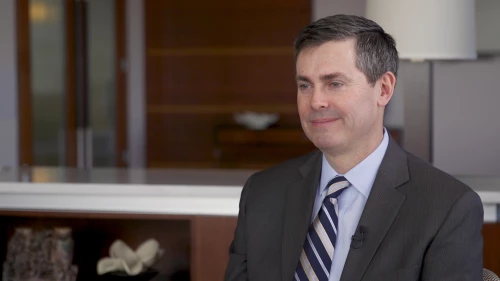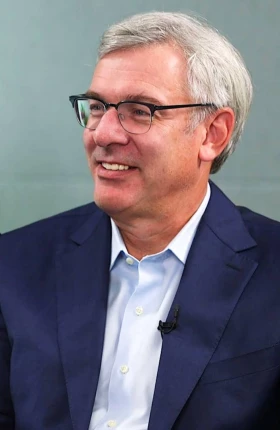
The topic of diversity and inclusion (D&I) has long been important for high-performing organizations—and never more so than during periods of crisis. During these difficult times, Eli Lilly and Company has been able to draw on its commitment to D&I to support its people.
At a recent “day of solidarity” gathering in Indianapolis, David Ricks, Lilly’s president and CEO, reaffirmed the company’s commitment to creating a more diverse, equitable, and inclusive culture. “We believe it is our responsibility to lead the change we expect to see for our people and our communities,” said Ricks. “We can no longer accept systemic bias in any of its forms. The time for platitudes is behind us—the time for urgent action is now.”
Prior to the public health and racial justice crises of today, Ricks sat down with Matthew Krentz, Boston Consulting Group’s Diversity & Inclusion and Leadership chair, for a conversation about D&I. It seems right to step back from the moment and look broadly at why diversity matters at Lilly and why inclusion is so difficult to achieve. In 2019, the company won a prestigious Catalyst Award that highlights promising diversity, equity, and inclusion initiatives. The award was given for Lilly’s efforts to create “employee journeys” that describe the enablers and barriers to career progression of women and minorities.
About Dave Ricks
About Dave Ricks
At a Glance
Education
1996 MBA, Indiana University Kelley School of Business
1990 BS industrial management, Purdue University
Career Highlights
2017–present President and CEO, Eli Lilly and Company
2012–2016 President, Lilly Bio-Medicines
2009–2012 President, Lilly USA
2008–2009 President and General Manager, Lilly China
2005–2008 General Manager, Lilly Canada
1996–2008 Various positions, Lilly
1991–1994 Various positions, IBM
Outside Activities
President, International Federation of Pharmaceutical Manufacturers & Associations
Chairman-elect, Pharmaceutical Research and Manufacturers of America (PhRMA)
Chairman, Riley Children’s Foundation
Edited excerpts of the conversation between Ricks and Krentz follow.
Diversity and inclusion is a personal passion of yours. Why has this become so important, and why do you see it as important for Lilly?
If you believe that talent is uniformly distributed across gender and race and all other dimensions of difference, and if you want the best talent, you are missing a competitive edge if you are underrepresented in one of those dimensions. There is also an emotional side, which is about engaging your workforce. We found that as we engaged on a big lift in D&I and focused on those differences and those underrepresented groups, it unleashed positive energy.
Can you talk about Lilly’s use of the idea of “employee journeys” in your diversity efforts?
We wanted to tackle two things. We wanted to first pull out where differences were profound—where were women feeling that they weren’t on an equal footing with men—so that we could then do the second, which was act on those problems. To really understand frustrations, intentions, you need to ask people to journal and participate in focus groups and use other qualitative market research techniques. We used that approach to understand an employee’s journey through our company. How did they start? What frustrations arose along the way? As they ascended in management, how did those challenges differ?
We all know the power of storytelling and narrative. By creating narratives that were not about individual women but generalized journey experiences, women felt incredibly listened to in our company. It was describing their experience, and you could see and feel emotionally the difference. We got past the “Why are we working on this?” discussion quickly to “We’ve got to fix this. We don’t want that in our company.” It’s been a profound catalyst. We’ve replicated it for Blacks, Latinos, and Asians. We’re currently doing these journeys for the LGBTQ community, which I think will present some new insights that will surprise many of us.
Do you measure the business benefits of diversity and inclusion?
We think about D&I as having four main impacts. One is talent sourcing. Another is talent unlock inside the organization: are the best people getting to the right jobs? The third is innovation. And the fourth is market impact: Are we reaching diverse populations? We do set goals and measure ourselves against goals for representation at every level in every division of the company for the major ethnic groups in the US and globally for women.
We measure our performance in communities of color, especially the Hispanic communities in the US. It’s been a challenge for pharma and a challenge for Lilly. We serve a number of diseases that are quite prevalent in that community, and we’re measuring performance there as well.
Lilly is headquartered in America’s heartland, yet a lot of the diversity and inclusion issues are global. How do you adapt your approach across different cultures and markets?
We’ve built a set of tools to understand D&I across the company, but of course the specific dimensions of diversity in a particular culture are highly contextual, so we let our local leadership decide the priorities for their business. The goal everywhere is to look like and access talent that is similar to the entirety of the population.
Can you tell us a bit more about the reverse-mentoring program you have with your LGBTQ employees and with senior executives?
The idea is that the diverse person, who is often junior, is mentoring the executive in how to interact with employees who are different. This can help create awareness around the unintentional things we say and do that are ineffective or even offensive.
What else do you see left to do on diversity and inclusion?
As I now look at the leading metric—which is, of the jobs we staff each day, how are we doing?—it looks very promising. I think we have a chance over the next several years to have gender balance across the company at all levels and to have minorities in the US represented at the rate of their population in the US. Those are real goals we can achieve.
Will we be done with D&I? No. No way! D is a precursor to I. Diversity is often described as being invited to the party. Inclusion is being asked to dance. Are you engaged in the decision making in the leadership of the company fully? And we have a lot of work to do there.
We are probably at the end of the beginning of the diversity journey. I think we’re seeing that when we work on that, we can make real progress and become a very diverse company—and that by itself is a huge achievement.
What do you then see as your role in taking that on and continuing to advance?
When you have a high performer who may be not so inclusive, what happens to him in his career versus someone who is inclusive? That’s treating it like a business issue, and I think that’s a unique role a CEO can play.





